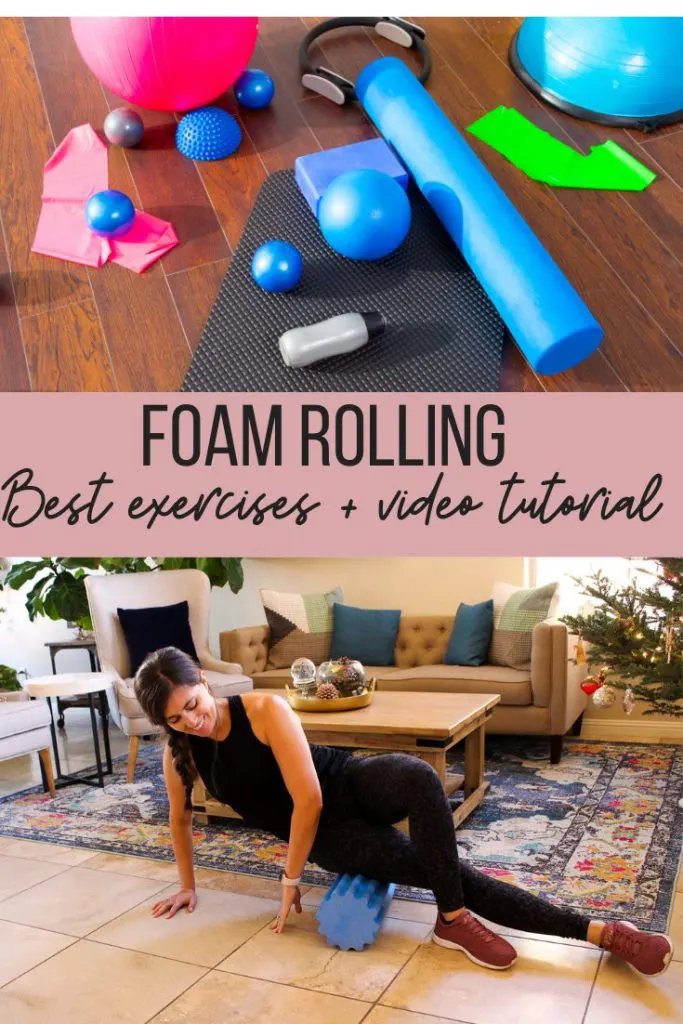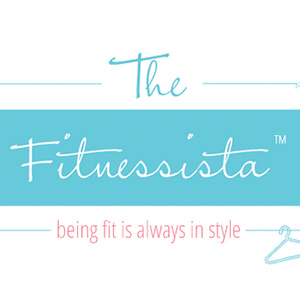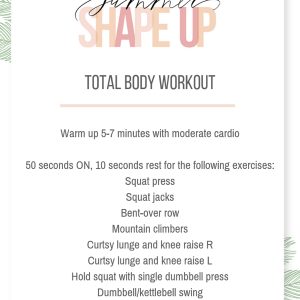Foam Rolling Benefits + a 10-minute video
Sharing some of my favorite foam rolling exercises for self-myofascial release and relaxation. These also make great pre- or post-workout options to potentially help with mobility and recovery. Check out the full video below!
Let’s be super honest here. How many of us actually foam roll on a regular basis?
I have to admit that I don’t foam roll as much as I should, but when I make it a part of my regular routine, I notice an increase in my flexibility and decreased muscle soreness.
Foam Rolling Benefits + a 10-minute video
Here’s a video I recorded with some of my favorite foam rolling exercises. I hope you enjoy this one! It only takes 10 minutes and is a great way to warm up or cool down from your workouts. As always, talk with a doctor before making any changes to your fitness routine.
Subscribe to my Youtube channel here! You’ll get notified when new videos are posted.
Why is foam rolling important?
Foam rolling is a form of self-myofascial release. This means it has similar benefits to massage, but you can do it to yourself! I like to compare fascia to Saran wrap coating the muscles. When it’s bundled or has adhesions, it can hinder full range of motion. This can lead to altered movement patterns from compensation, overuse injuries, and pain. The goal is to keep the fascia smooth and free of scars or adhesions as much as possible. This way we can complete our workouts more safely as well as everyday movements.
Foam rolling can help you increase blood flow to the muscles and promote full range of motion. This makes it excellent as a pre-workout choice because it can help you perform the exercises more effectively. (For example, if you have trouble squatting, your calf muscles may be extremely tight. This prevents full dorsiflexion of the ankle. Foam rolling your calves can help increase the range of motion for your squat! This is just one example of how it can help during workouts!)
More potential benefits (from this site):
Correction of muscle imbalances
Muscle relaxation
Improved joint range of motion
Improved neuromuscular efficiency
Reduced soreness and improved tissue recovery
Suppression/reduction of trigger point sensitivity and pain
Decreased neuromuscular hypertonicity
Provide optimal length-tension relationships
Decrease the overall effects of stress on the human movement system
Contraindications for foam rolling: if you have varicose veins, heart or organ issues, bleeding disorders or skin conditions, I would skip foam rolling. I would also check with your doctor if you’re pregnant.
How do you foam roll?
When you foam roll, you’ll want to roll very slowly and hold any spots that feel tight or sticky. While you’re holding the tight spot for 30-60 seconds, take deep breaths, and mentally picture the muscle relaxing. <— this helps me!! Feel free to do any muscle groups that you know are particularly tight.
If you’re foam rolling before a workout, following this with active or dynamic stretches. If you’re foam rolling after your workout, follow with static stretches.
WATCH OUT: Do not roll over any joints, like your elbows, or knees. Always roll up to the joint, but not over. Also, avoid any twisting motions while rolling your back since we have floating ribs. Only roll straight up and down on your back.
How often should you foam roll?
You can foam roll every day if you’d like! I don’t think that this is realistic for most people, so I’d try to implement it once a week on rest days and build into your routine from there. My goal is to foam roll 1-3 times a week.
Why does foam rolling hurt?
I like to joke that foam rolling, “hurts so good.” While it feels tight and sticky, you should never feel actual pain while rolling. If you feel pain, stop! Also, take note of how it affects your muscles and your workouts. For myself, I don’t like to roll my IT band too often because it can irritate my knee. See what works best for you.
Self-myfascial release tools and resources:
Yoga Tune Up (Jill Miller and Katy Bowman are on the podcast this week!!)
Theracane (this is my FAVE for tight rhomboid and trapezius muscles)
Ok, honest talk: when was the last time you foam rolled? Any favorite rolls? What’s something you implement into your rest or recovery days?
xo
Gina















